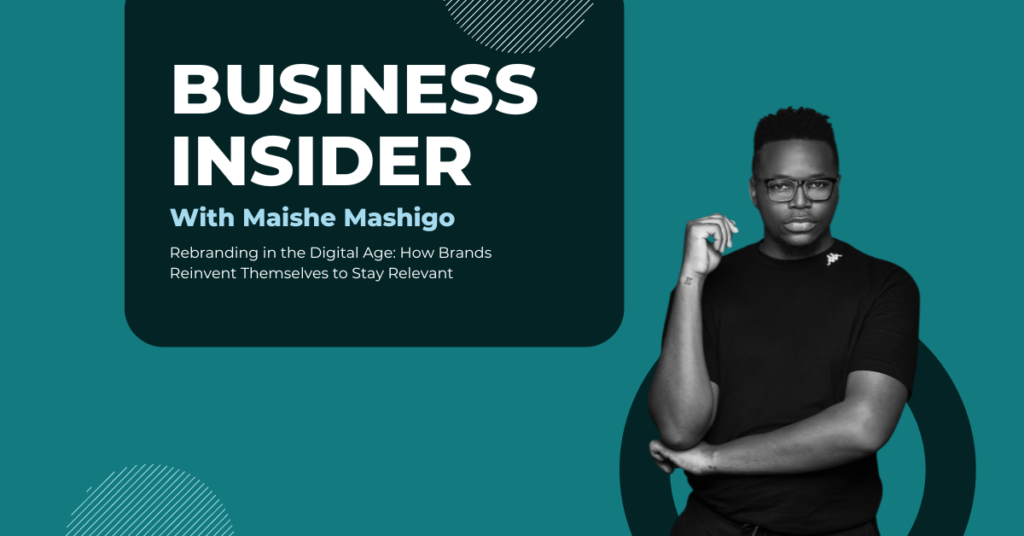In today’s fast-moving digital world, brands have to keep up or risk getting left behind. The way we consume content, interact with brands and make purchasing decisions is evolving rapidly. It’s no longer just about having a slick logo or a catchy tagline—it’s about telling a compelling story, staying true to your values and engaging your audience in a way that feels authentic.
What is branding, really?
Branding is like a great first date—you want to make a strong impression, show off your personality and leave people wanting more. It’s not just about looking good; it’s about how you make people feel, what you stand for, and the experience you create. A brand isn’t just a logo—it’s the emotional connection people have with a company, product or service.
Why rebranding matters
Rebranding isn’t just a last resort for struggling companies—it’s a smart move for even the most successful ones. Consumer expectations are always shifting and if a brand doesn’t evolve, it risks becoming outdated. Maybe your visuals feel stuck in the past, your messaging no longer resonates or you want to shake off an old reputation. Whatever the reason, a well-executed rebrand can give your business a new lease on life.
The digital age effect
Rebranding in the digital era is both easier and riskier. On the plus side, brands can update their look and messaging faster than ever. But on the flip side, digital audiences don’t hold back when they don’t like what they see. Instant feedback—whether praise or criticism—can make or break a rebrand. That’s why understanding your audience and making data-driven decisions is more crucial than ever.
What makes a rebrand work?
- Stay Authentic (For Real, Not Just for Show) – “Authenticity” gets thrown around so much these days that it’s become a marketing cliché. Slapping “authentic” onto your brand message doesn’t make it so—customers can spot the difference between a brand that genuinely walks the talk and one that’s just using it as a buzzword. A successful rebrand should align with your core values and not feel like an empty facelift.
- Engage with Your Community, Inform Your Audience – A successful rebrand isn’t done in isolation. Your community—your loyal customers, brand advocates and engaged followers—should feel heard throughout the process. Their insights can help shape the direction of the rebrand and ensure that it stays true to what they already love about your brand. At the same time, your broader audience needs clear, intentional communication so they understand the changes and connect with the new brand identity. Getting this balance right helps maintain trust and excitement.
- Think Beyond the Logo – A new logo alone won’t cut it. Your website, social media presence, and brand voice all need to be part of the transformation. A simple swoosh, for example, is more than just a logo—it embodies a brand’s philosophy, values, and global recognition. That level of branding success doesn’t come from design alone but from a holistic, well-executed brand strategy.
- Use Data Wisely – Digital tools make it easier to analyse trends, track engagement, and understand consumer behaviour. Let the data guide your decisions.
- Make the Transition Seamless – A sudden, jarring change can confuse or alienate your customers. A phased rollout, clear communication, and strong storytelling can make all the difference [side eyes you all know who].
Here are some brands that have taken some hefty risks
- Stanley Cup & Terence Reilly’s Marketing Masterclass – If there’s one brand that’s nailed the art of the modern rebrand, it’s Stanley. Under CEO Terence Reilly, the once-forgotten brand became a viral sensation. By tapping into nostalgia, collaborating with influencers, and mastering social media, Stanley turned its classic tumblers into must-have lifestyle accessories. It’s a perfect example of how smart, culturally relevant marketing can completely reinvent a brand.
- Jaguar’s Type 00: Risky Gamble or Marketing Masterstroke? – As discussed in Bizcommunity, Jaguar’s bold move to introduce Type 00 was a major rebranding shift. The brand leaned into the digital world, embracing storytelling that challenged convention. This campaign shows how risk-taking, when backed by strong market insights and a fresh perspective, can reinvigorate even a well-established brand.
- Castle Lager – One of South Africa’s most iconic beer brands, Castle Lager successfully refreshed its image while staying true to its heritage. By modernising its packaging, engaging with local sports sponsorships and tapping into national pride, the brand has maintained its relevance in a competitive market.
- Checkers Sixty60 – Checkers revolutionised grocery shopping in South Africa with the launch of its Sixty60 delivery service. This rebrand from a traditional supermarket to a tech-savvy, convenience-driven brand has helped it connect with a younger, digital-first audience.
- Nando’s – Known for its bold and cheeky marketing, Nando’s has continuously evolved its brand identity while staying true to its Afro-Portuguese roots. Through witty social media campaigns and a focus on local culture, it has built an engaged and loyal community.
What’s Next for Rebranding?
Stanley’s comeback and Jaguar’s bold digital strategy prove that brands that take calculated risks, embrace digital trends, and engage their audiences authentically can redefine their place in the market. Looking ahead, emerging tech like AI and virtual reality will take brand experiences to the next level, making rebranding more interactive and personalised than ever.
At the end of the day, a rebrand isn’t just about a new look—it’s about telling a story that people want to be part of. And like a date, consumers ultimately have the power to swipe left or right, depending on what tickles their fancy. If your rebrand doesn’t spark excitement, connection or a bit of intrigue, don’t be surprised when your audience moves on to something—or someone—more interesting.




